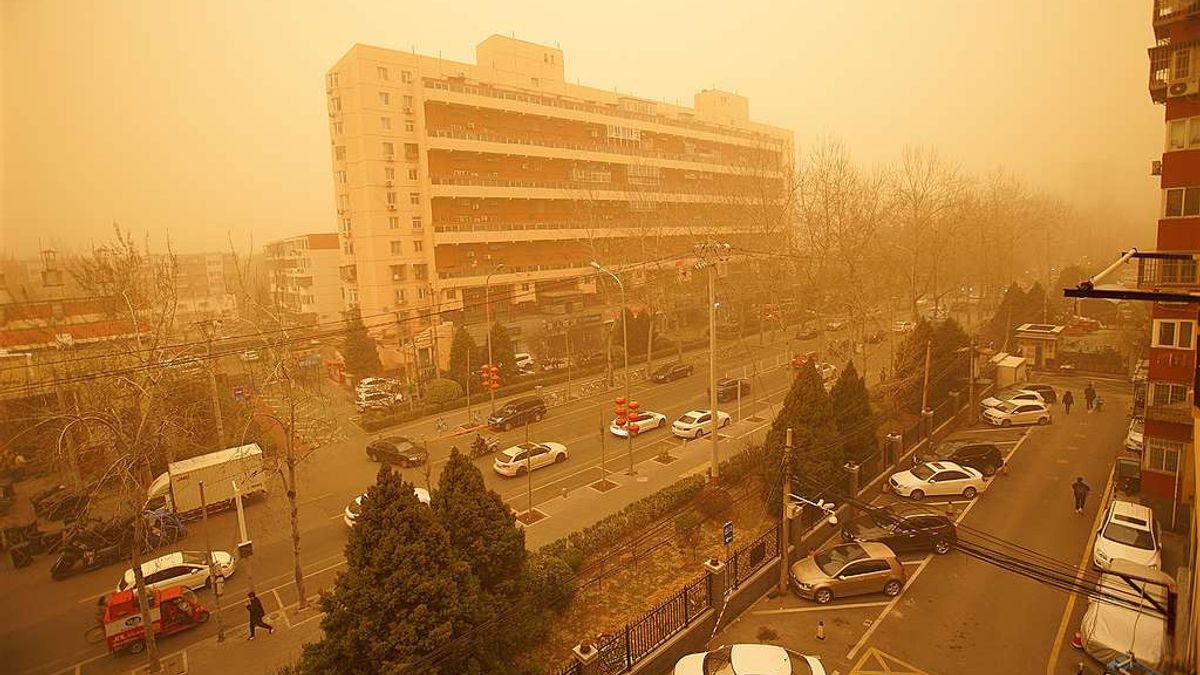JAKARTA - For the second time in two weeks, China's capital Beijing was shrouded by a sandstorm carrying dangerous particles on Sunday, March 28.
The dangerous sandstorm is said to be due to winds from drought-ravaged Mongolia and northwestern China, which the public should be aware of.
Visibility in the city is reduced. The number of skyscrapers in Beijing was covered by sandstorms. Meanwhile, pedestrians must close their eyes when gusts of sand blow the streets.
Beijing's official air quality index hit a maximum level of 500 on Sunday morning. This is followed by the floating particles known as PM10 exceeding 2,000 micrograms per cubic meter in some districts.
Meanwhile, the smaller PM2.5 particle reading was above 300 micrograms per cubic meter, much higher than the Chinese standard of 35 micrograms.
PM2.5 particles are very dangerous because they are very small and can enter the bloodstream. Meanwhile, PM10 is a larger particle that can enter the lungs.
Earlier, the China Meteorological Administration issued a yellow alert on Friday, warning that sandstorms were spreading from Mongolia to northern Chinese provinces including Inner Mongolia, Shanxi, Liaoning, and Hebei, which surround Beijing.
SEE ALSO:
The meteorological office said the recent sandstorms that hit Beijing originated in Mongolia, where relatively warmer temperatures this spring and reduced rainfall have resulted in more areas of vacant land, creating favorable conditions for sandstorms.
"Beijing may face more sandstorms in April due to unfavorable weather this year," said the meteorological office.
The English, Chinese, Japanese, Arabic, and French versions are automatically generated by the AI. So there may still be inaccuracies in translating, please always see Indonesian as our main language. (system supported by DigitalSiber.id)


















